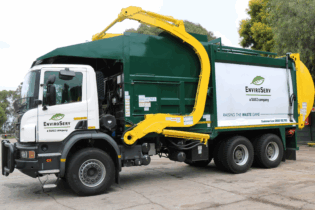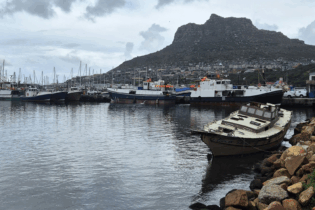What is SBS Tanks’ current strategy for the municipal market?
MG Our mission is to ensure that every municipality in South Africa understands the advantages of the SBS Tanks product line as a very flexible solution. At SBS, we offer a turnkey package that brings true value to the end user. Our tanks have been proven to last well beyond 60 years, with minimal maintenance. This means that municipal budgets are well spent. And this doesn’t just apply to South Africa. SBS exports globally and has an expanding presence in key public and private sector markets that include the USA.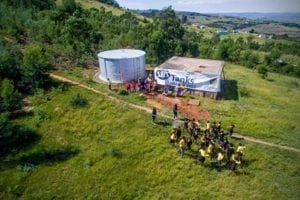 What other fluids besides water can these tanks handle?
What other fluids besides water can these tanks handle?
Mining is one of the most aggressive environments and puts any product to the test. Our tanks meet the most exacting requirements in this area and that means that our products are field-proven for virtually every other application. SBS’s liners, which form an integral part of the tank system design, range from normal potable requirements to leachate and wastewater applications.
Our tanks have also been widely used in the waste management industry, because they can store leachate from dump runoffs and other waste management sites, assisting in the client’s requirements for stench control.
How does the wastewater segment fit into the business model?
For the public sector market, we specialise in containing brackish water or wastewater for further processing. One of our flagship wastewater projects is the ongoing relationship we have with Sembcorp Siza Water in Ballito, KwaZulu-Natal. Sembcorp extracts water from two sources: the river system and processed wastewater. In November 2016, we provided a 2 Mℓ temporary storage solution to meet Sembcorp’s requirements over the December season, following a major tank failure on a non-SBS tank. Sembcorp sells its potable water to the local municipalities, so the implications were severe. SBS replaced the failed tank with the 2 Mℓ tank in just four days, and then installed an additional 2.4 Mℓ and 3.3 Mℓ tank as per client requirements.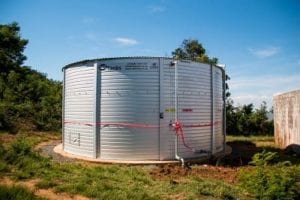 Can you provide examples of how SBS works with municipal managers to find effective water storage solutions.
Can you provide examples of how SBS works with municipal managers to find effective water storage solutions.
We advise on the best outcome for communities. Sometimes, this solution involves the interconnection of our tanks with existing supplies. At other times, it’s a standalone installation for rural communities outside the existing municipal grid.
Often, the initial enquiry by municipalities is the starting point for a proactive discussion that ends with the final best outcome, after exploring all the other alternatives. Here, we pride ourselves on providing objective professional advice based on our value engineering philosophy.
Our goal is to lower the cost for municipalities – e.g. by optimising gravity-fed systems, thereby reducing pump station and pipeline installations. Multiple smaller tanks can also be installed at higher elevations. To achieve this, SBS provides site assessment services to assist municipalities and consulting engineers with the best tank system location and layout. SBS also runs a series of annual roadshows at municipalities, which are also attended by contractors and consultants.
Our smallest tank is 12.5 Kℓ (12 500 ℓ). But because we’re modular, the capacity can be incrementally expanded. In other words, we can customise the volume, scalable up to a 3.3 Mℓ capacity, given available construction footprints.
Steel tanks vs concrete reservoirs: how do they compare from a construction cost perspective?
In terms of cost impact and time, steel tanks are far faster to build when compared to concrete reservoirs, without compromising capacity. A 3 Mℓ concrete reservoir would typically take around 18 months to complete; an SBS installation of the same capacity would be commissioned in approximately 40 days. When it comes to municipal strategy, this is obviously a very persuasive argument and we constantly reinforce the benefits through our national workshops. On another note, SBS is often appointed to remediate concrete reservoirs that experience major leakages. Here, we install the same PVC liner we employ in our own tanks.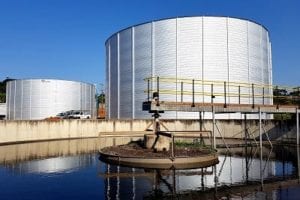 South Africa has a major informal settlement challenge and a service delivery backlog in terms of water and sanitation. How can SBS assist?
South Africa has a major informal settlement challenge and a service delivery backlog in terms of water and sanitation. How can SBS assist?
We are engaged with municipalities and they are aware of what we can do. After many similar successful installations, we’re positive that further opportunities will be forthcoming.
These systems can also be metered, whether powered by solar or the grid, via telematics that record elements like consumption, inflow, outflow, level and even water temperature – so there are definite benefits for community projects.
Can you expand on SBS’s solutions for rural communities, with project examples.
Many of our municipal projects are incremental and ongoing. Examples include the Sol Plaatje District in Kimberley, as well as in Aliwal North, both in the Northern Cape. At Sol Plaatje, SBS’s installations comprised two 2.5 Mℓ tanks for potable water supply via municipal reticulation.Can rainwater harvesting make a meaningful impact?
Absolutely, and we’re proud to say that we have our own system installed at our Pinetown facility. The solution is highly sustainable and every building, public or private, should have a rainwater harvesting system. So far, we’ve installed systems at a number of companies and schools in KwaZulu-Natal, which obviously benefit from saving toilet water wastage.Has the extended drought presented new opportunities for SBS?
Without a doubt. Desalination, for instance, whether for seawater or inland brackish water, is a definite consideration now, despite its relatively high cost compared to conventional treatment. Cities like Cape Town have already started desalination projects as a critical drought intervention. That presents opportunities for steel tank reservoirs (before and after treatment), especially given their speed of installation. And should a desalination plant go down for any reason, reservoir tanks always ensure a reserve backup or, as we like to call it, ‘future water’.What are your thoughts on the future in terms of balancing water supply and demand?
We want to see our tanks filled, working and delivering water to the community. That comes down to building lasting partnerships with our public and private sector stakeholders. For SBS, we are proud to say that we deliver in terms of local and international quality and ISO standardsand specifications.






